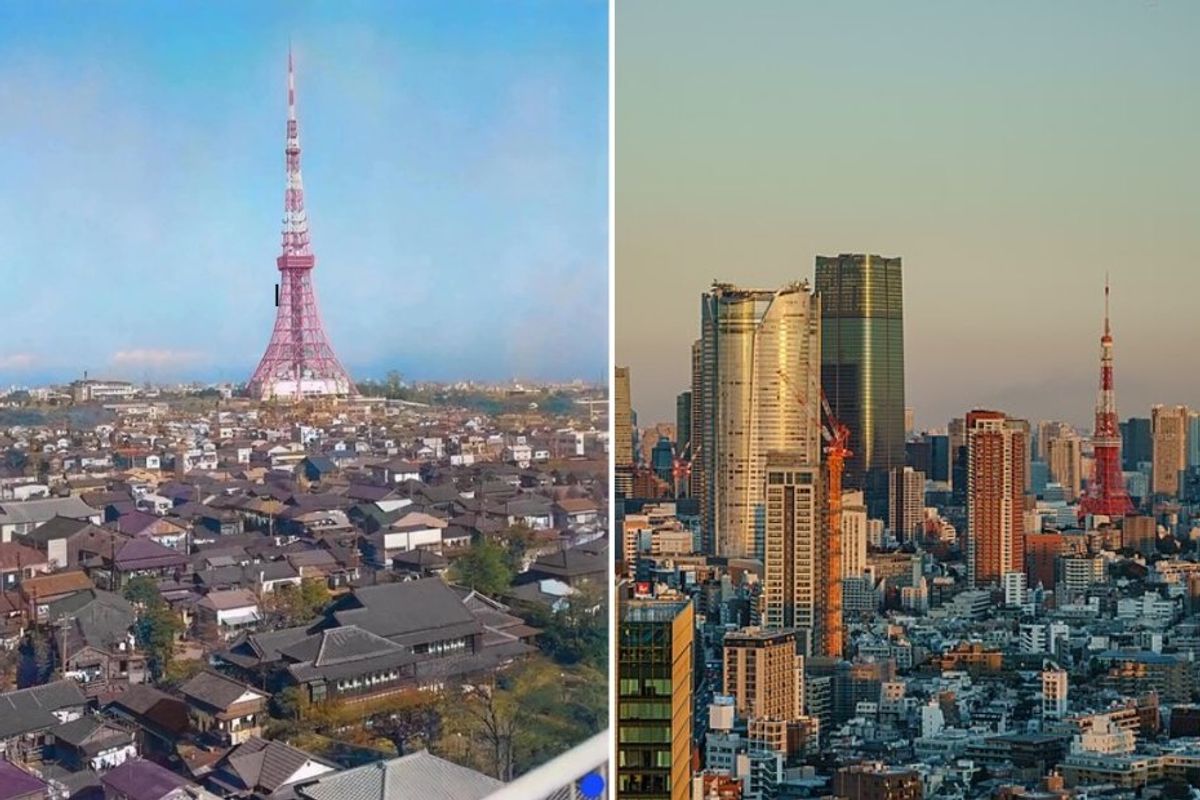Real photo of downtown Tokyo in 1960 before skyscrapers were built is blowing people's minds
The before and after is so drastic people can't believe it's not an AI image.

Tokyo has changed drastically since 1960.
Americans have long had a fascination with Japan, but thanks to anime, manga and Pokemon, young people in particular seem to have a special affinity for the country and the culture. According to Travel Noire, Japan is the fastest growing travel destination for millennials and Gen Z, and tourism in the Land of the Rising Sun is booming.
Most people who travel to Japan spend at least part of their time in Tokyo, the world's second-largest city, but many modern travelers may not be aware of how drastically the city has changed in the past 60 years. Here is what Tokyo looks like today:

That red and white pointed tower in the center of the photo is Tokyo Tower. When it was finished in 1958, Tokyo Tower was the tallest freestanding tower in the world at 333 meters. It was the tallest structure in all of Japan up until 2010. This photo is likely what people would expect the second-largest city on Earth to look like—lots of tall buildings close together to accomodate a dense population.
Obviously, if we went back in time far enough, the landscape here would look quite different, but we don't actually have to go back very far to see a different view of Tokyo. A 1960 photo of Tokyo Tower—an iconic landmark in downtown Tokyo—is so different than the current cityscape that it has people questioning if it's an AI-generated image.
from Damnthatsinteresting
Whoa. What a difference less than one lifetime makes. People in the comments say the 1960 photo looks like it comes straight from an anime scene or Godzilla movie from the past. Tokyo residents who were 10 years old in 1960—old enough to have clear memories of what the city looked like back then—are 75 now. They've watched the city transform from this traditional-looking scene to the modern metropolis it is today.
We have to go back a bit before 1960 to get the full picture of how much the city has changed. In 1940, the population of Tokyo was around 7 million people, but that number was cut in half during World War II. By October 1945, the city's population had fallen to a mere 3.5 million people. Since then, it's grown to over 14 million people—quadruple what it was when the war ended. (For comparison's sake, the population of New York City has grown less than 10% from 1945 to now.)
Tokyo began growing rapidly after the war, and growth accelerated through an economic boom in the 1970s and the tech manufacturing boom of the 1980s. Japanese innovation with electronics, cars, and more made them a major player in the global economy despite being a relatively small and isolated country geographically. Tokyo's growth from 1960 to 2010 paints a clear picture of the boom the nation experienced in the last half of the 20th century.

However, that massive growth Tokyo saw during the average baby boomer's lifetime has basically ground to a halt. Japan's overall population has been in decline since 2010, and Tokyo saw its first population decline in 26 years during the COVID-19 pandemic in 2021. The future outlook doesn't look great on that front for the city, either. A study group set up by the Tokyo Metropolitan Government estimates that Tokyo's population will fall by half by the year 2100, back to the 7 million or so that the city saw in 1940—and nearly half of that population will be over 65. Japan's good reputation for longevity provides little comfort for a rapidly aging nation with a birth rate that doesn't line up.
"The number of people in their most productive years will decline, while local governments will face severe financial strains," the group said in a statement. "So it will be crucial to take measures to turn around the falling birthrate and enhance social security measures for the elderly."
Has Tokyo seen its heyday come and go? Will we see a very different photo of what surrounds Tokyo tower in another 60 years? Perhaps. But Japan has seen its fair share of crises and repeatedly come out strong on the other side, so maybe the city beloved by millennials and Gen Z alike will rise again in an innovative way that surprises us all.
- The restaurant in Japan where getting your order wrong is totally expected and accepted ›
- The reason Japanese fans clean up after World Cup matches boils down to one word—'atarimae' ›
- Teacher in Japan shares mind-blowing differences between her school and schools in the U.S. ›
- Trading cards of elderly men is most popular game in Japanese town - Upworthy ›

